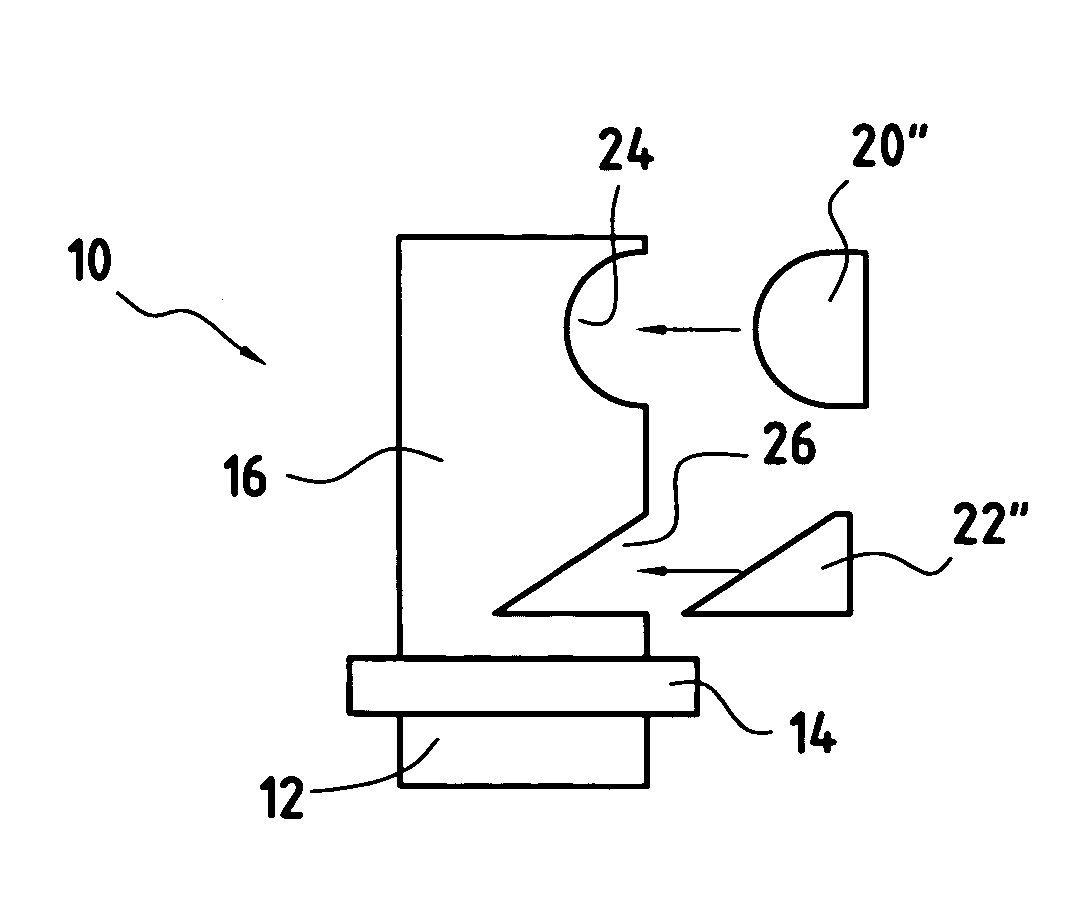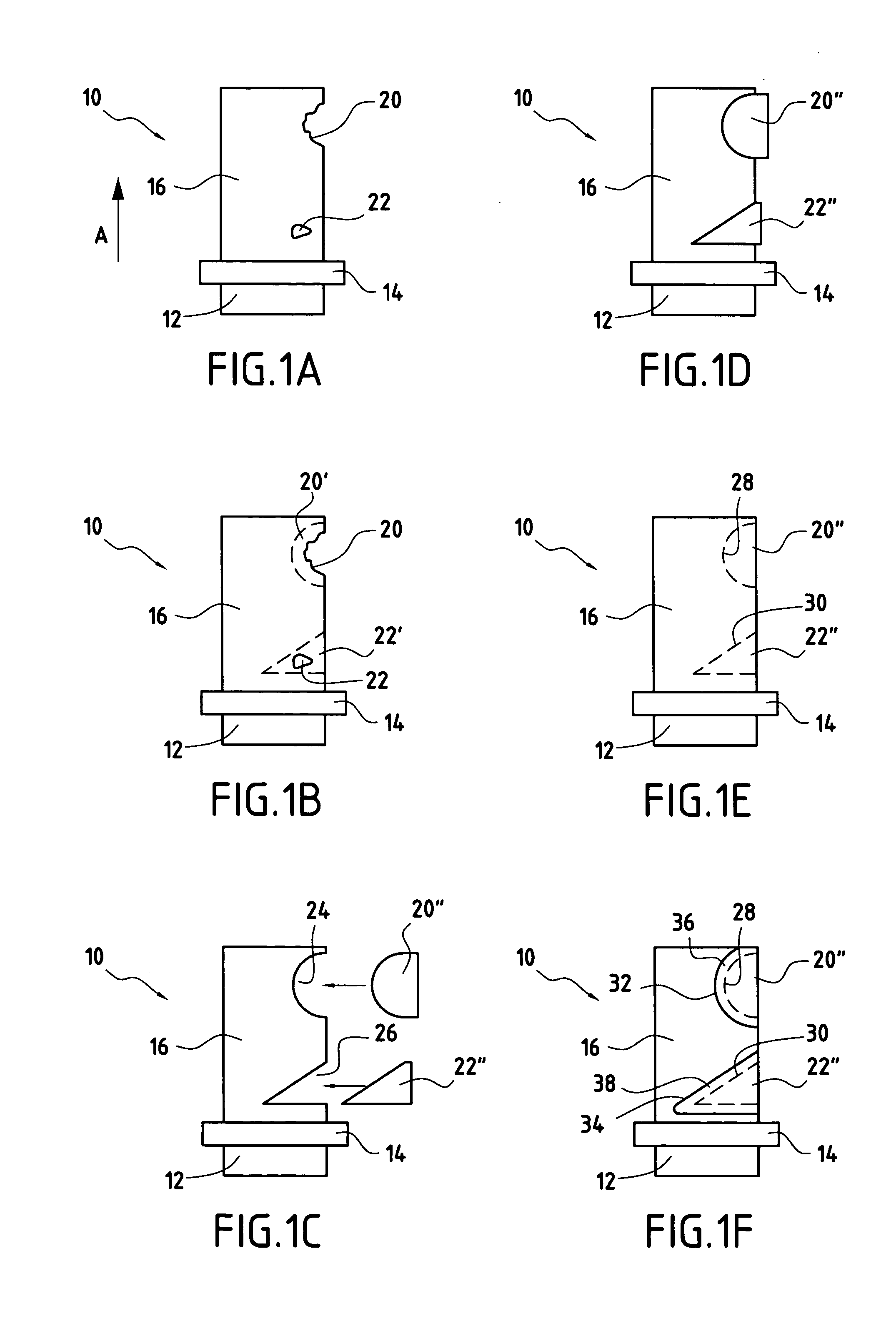Method of repairing a blade member
a blade member and metal technology, applied in the direction of efficient propulsion technologies, machines/engines, manufacturing tools, etc., can solve the problems of blades being subject to damage, expensive to manufacture, maintain and repair, and sometimes experiencing damage, so as to induce compressive stresses
- Summary
- Abstract
- Description
- Claims
- Application Information
AI Technical Summary
Benefits of technology
Problems solved by technology
Method used
Image
Examples
Embodiment Construction
[0021] In a first preferred embodiment of the present invention, as illustrated in FIGS. 1A-1F, a localized damaged area of a blade member is repaired by cutting away a portion of the blade member generally conforming to the extent of the damaged area, and thereafter replacing the cut away portion with a similarly shaped replacement portion. This is generally advantageous because it minimizes the amount of the original constituent material removed from the blade member, thereby helping to largely maintain the original mechanical characteristics of the blade member.
[0022]FIGS. 1A-1F are side schematic views of a generalized blade member 10, particularly a blade member used in a turbomachine, such as a turbofan engine. In turbomachine applications, blade member 10 is made from any suitable metallic material, including metal alloys. Blade member 10, as illustrated, includes, for example, a root 12 for mounting blade member 10 in a disk (not shown) in a known manner, such as a dovetail...
PUM
| Property | Measurement | Unit |
|---|---|---|
| pressure | aaaaa | aaaaa |
| size | aaaaa | aaaaa |
| width | aaaaa | aaaaa |
Abstract
Description
Claims
Application Information
 Login to View More
Login to View More - R&D
- Intellectual Property
- Life Sciences
- Materials
- Tech Scout
- Unparalleled Data Quality
- Higher Quality Content
- 60% Fewer Hallucinations
Browse by: Latest US Patents, China's latest patents, Technical Efficacy Thesaurus, Application Domain, Technology Topic, Popular Technical Reports.
© 2025 PatSnap. All rights reserved.Legal|Privacy policy|Modern Slavery Act Transparency Statement|Sitemap|About US| Contact US: help@patsnap.com



